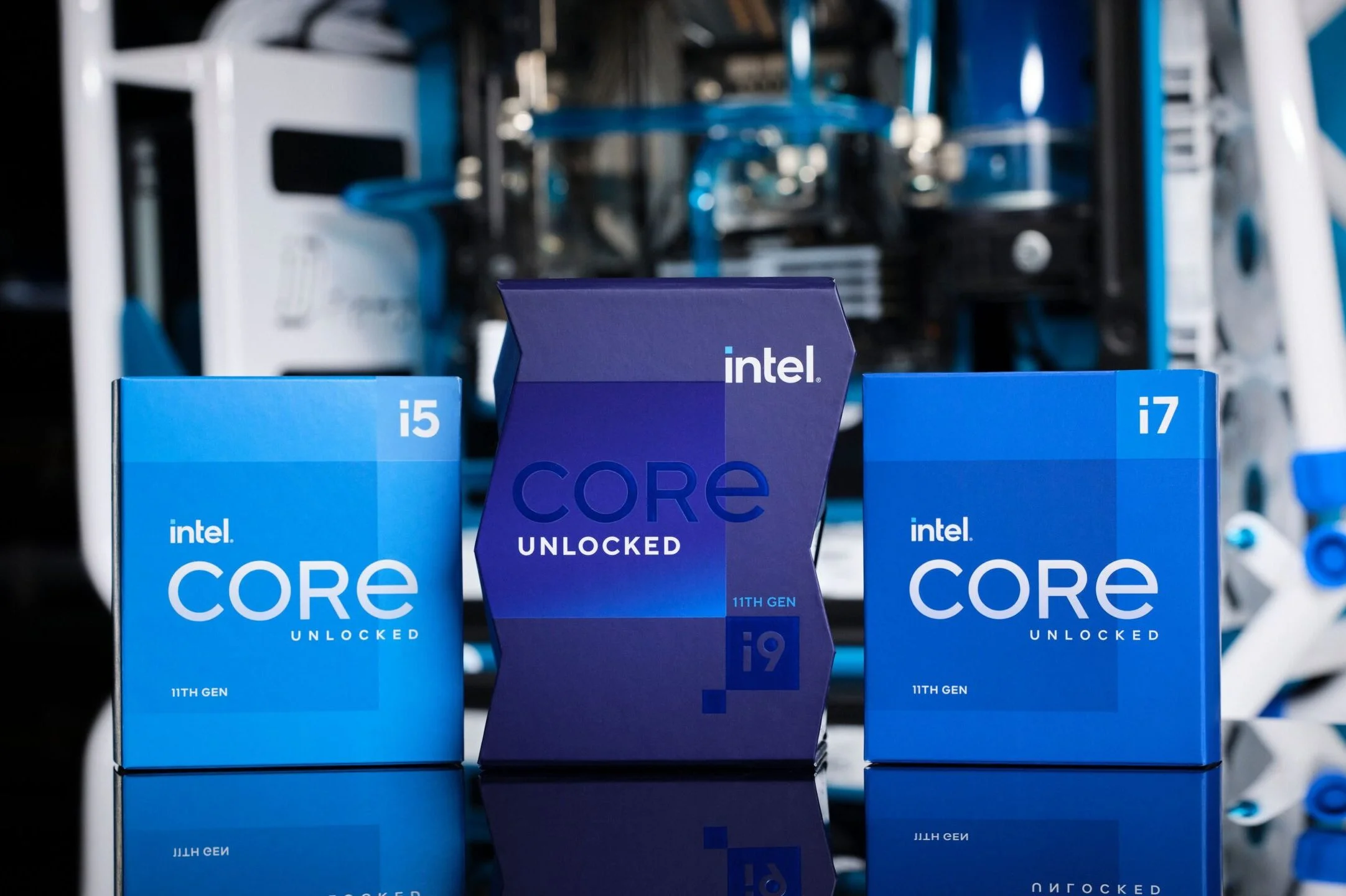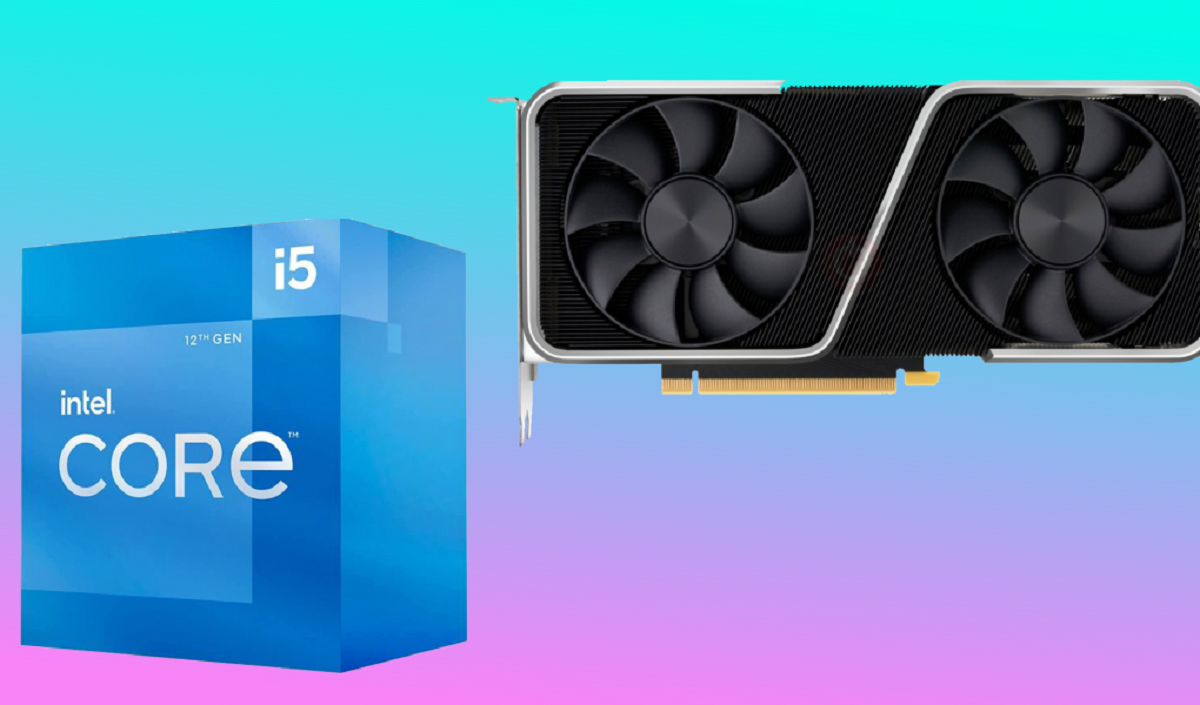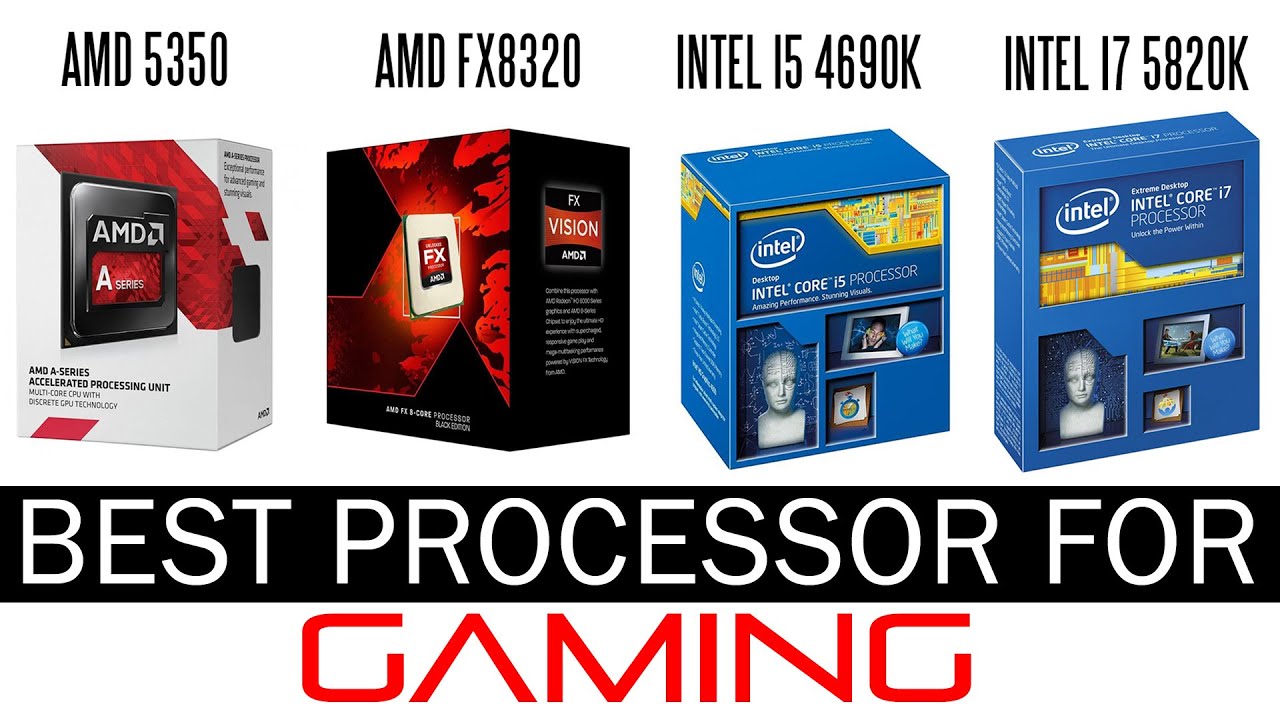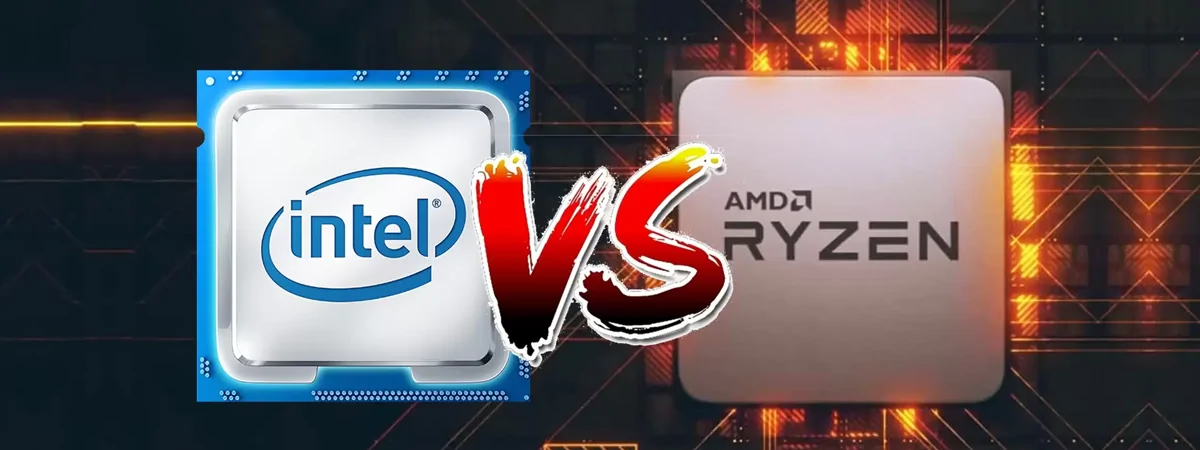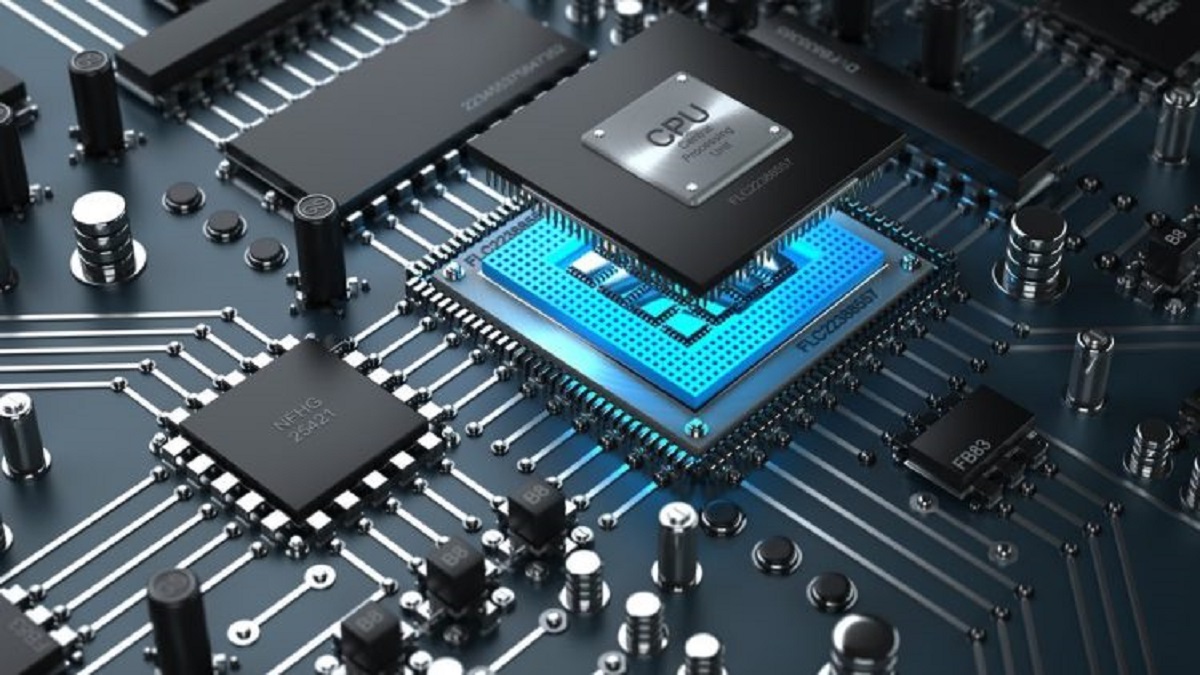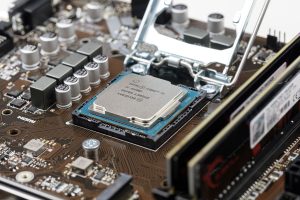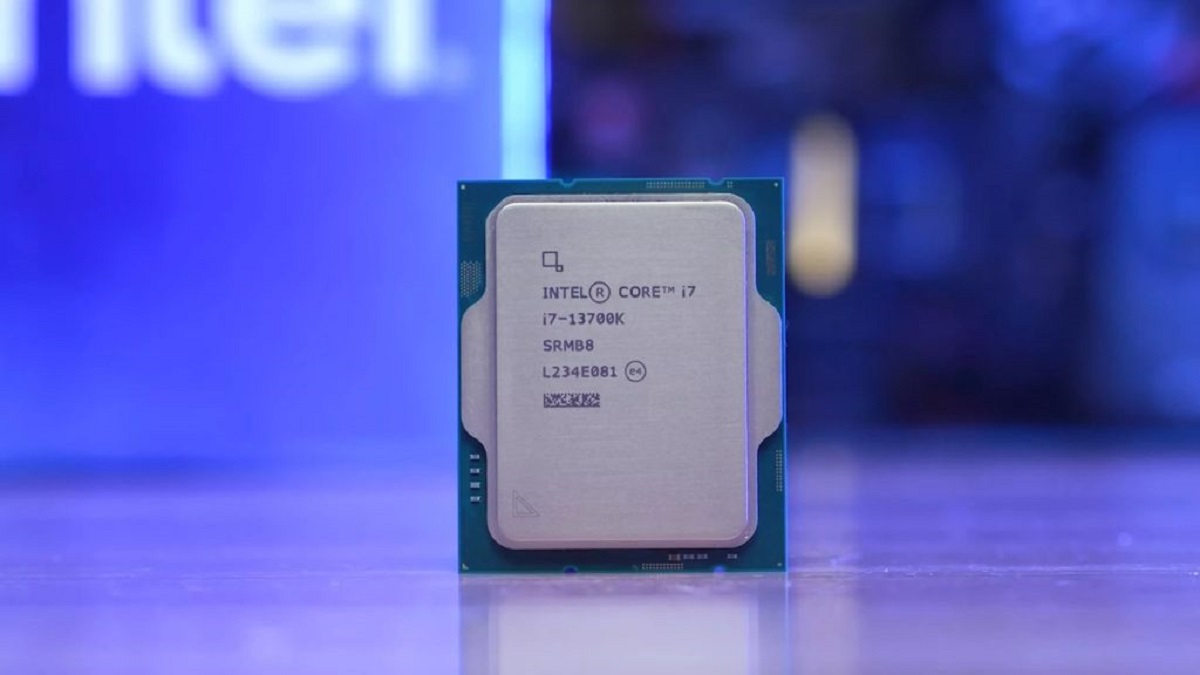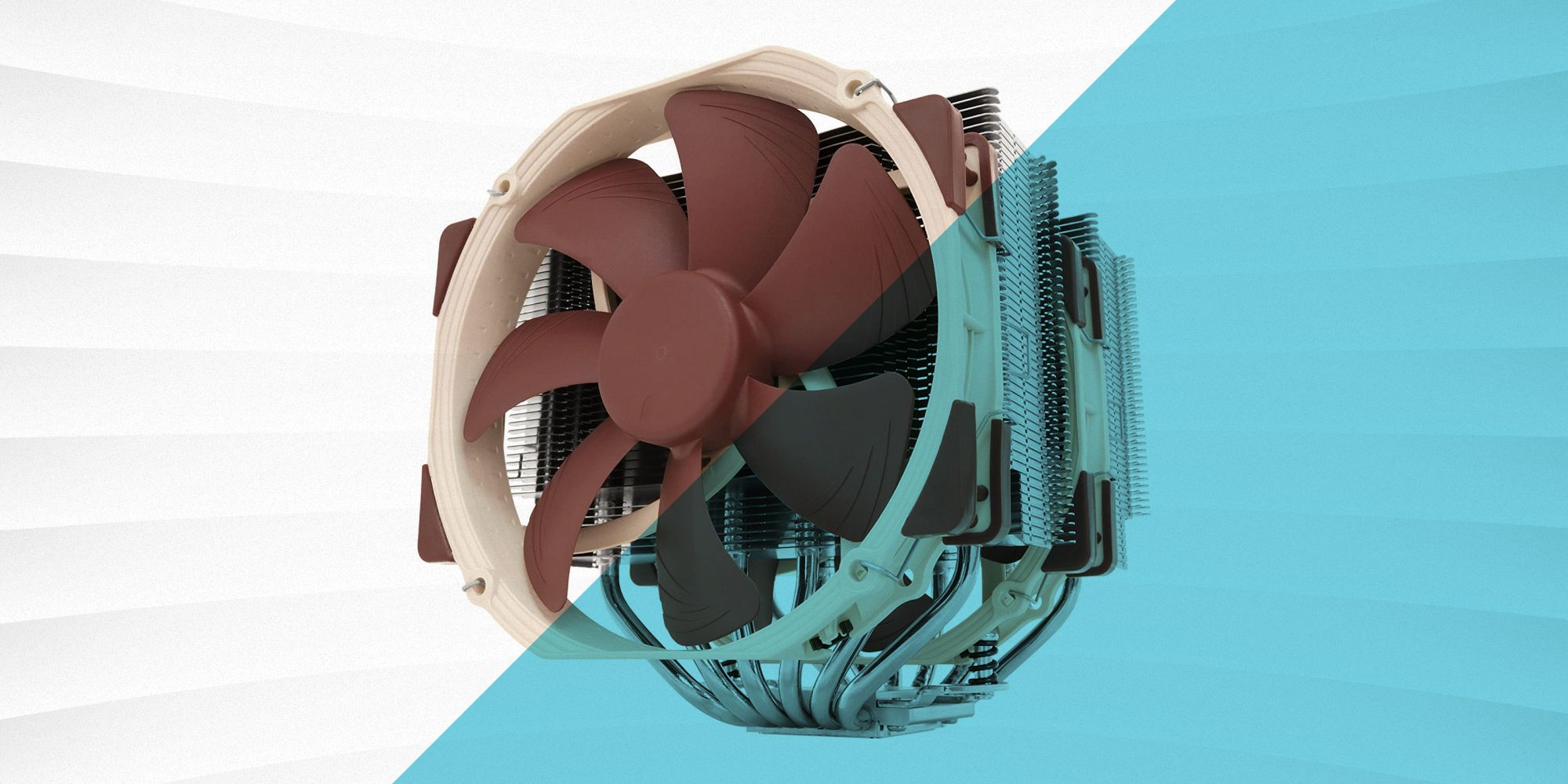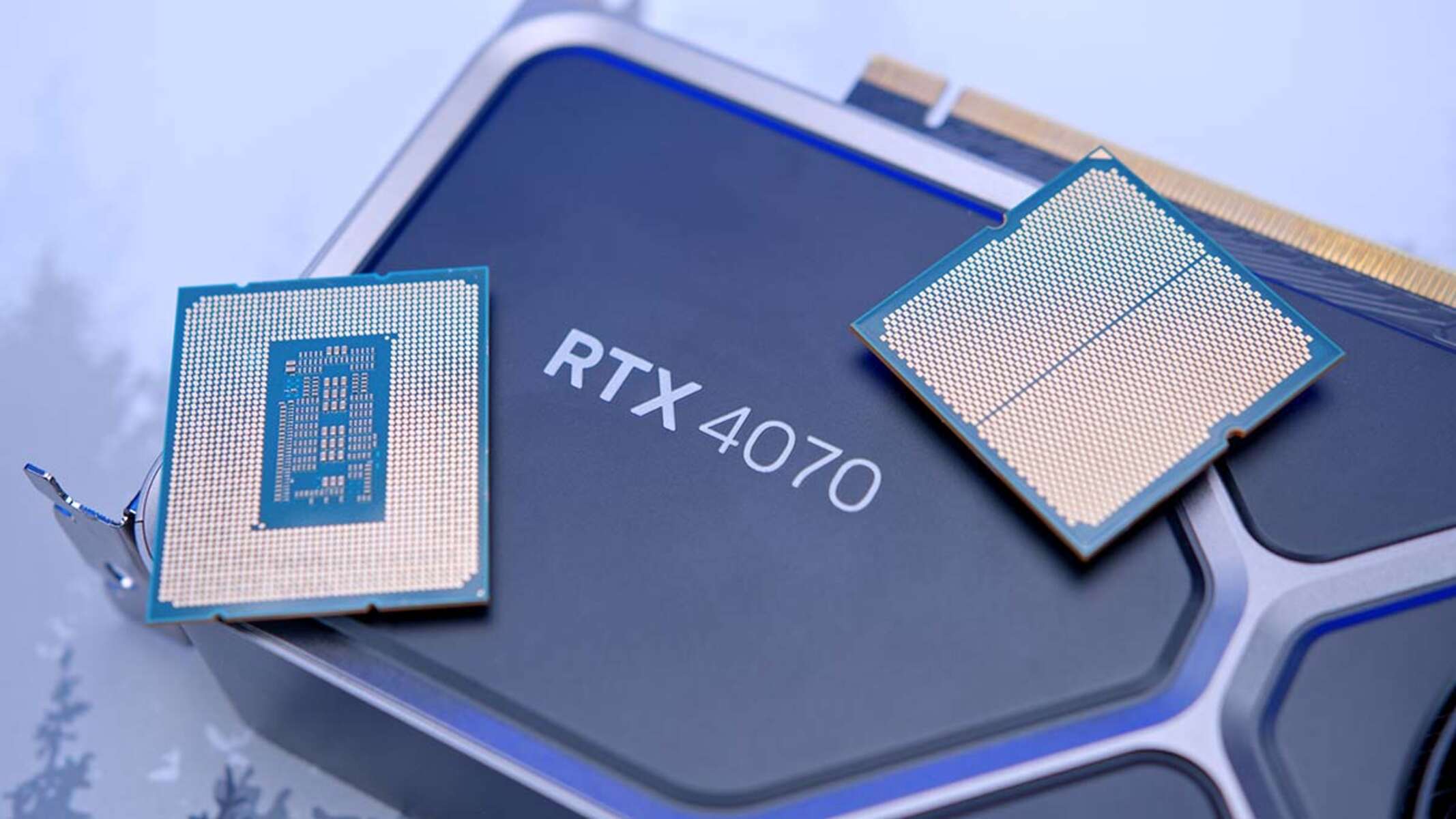Introduction
Intel has long been regarded as a powerhouse in the world of computer processors, and their CPUs have revolutionized the way we use technology. From powering complex workstations to delivering exceptional gaming performance, Intel CPUs continue to set the standard for speed, efficiency, and overall performance.
In this article, we will delve into the world of Intel CPUs and explore what makes them the best in the industry. We will understand the evolution of Intel CPUs, decipher the confusing terminology surrounding them, and guide you in choosing the right processor for your specific needs.
Whether you are a casual user seeking a budget-friendly option or a professional in need of a high-performance workstation, understanding the intricacies of Intel CPUs is crucial. With the right CPU, you can unlock a whole new level of computing power and experience seamless multitasking, fast rendering, and smooth gameplay.
Join us as we walk you through the different options available in Intel CPUs, their features, and their suitability for various applications. From desktop processors to mobile CPUs for laptops, we will explore the best offerings from Intel and help you make an informed decision for your computing needs.
So, let’s dive into the world of Intel CPUs and discover what makes them the go-to choice for individuals, professionals, and tech enthusiasts.
The Evolution of Intel CPUs
The journey of Intel CPUs began in 1971 with the release of the Intel 4004, a 4-bit microprocessor that marked the foundation of modern computing. Since then, Intel has consistently pushed the boundaries of processor technology, introducing new generations of CPUs that deliver significant improvements in performance, power efficiency, and features.
Over the years, Intel has introduced several notable CPU architectures, each representing a leap forward in processing capabilities. The Intel 8086, released in 1978, introduced the x86 architecture that quickly became the industry standard. Subsequent generations, such as the 80286, 80386, and 80486, brought advancements in clock speed, cache size, and improved instruction sets.
In the mid-1990s, Intel launched the Pentium series, which became synonymous with high-performance computing. The Pentium processors boasted superior performance for both gaming and professional applications, solidifying Intel’s dominance in the market.
The turn of the millennium witnessed the birth of the Intel Core series, with the release of the Core 2 Duo processors in 2006. This marked a significant shift, as Intel transitioned to a multi-core architecture, offering better multitasking capabilities. The Core i3, i5, i7, and i9 processors, introduced in subsequent years, have continued to push the boundaries of performance, introducing hyper-threading, higher clock speeds, and increased cache sizes.
Intel has also made considerable strides in power efficiency. With each generation, they have focused on reducing power consumption and heat generation, allowing for enhanced battery life in mobile devices and reducing the need for complex cooling systems in desktop PCs.
Another important aspect of Intel’s evolution is their collaboration with software developers. Intel has been actively involved in optimizing their CPUs for popular software applications, partnering with industry leaders to ensure seamless integration. This close collaboration has resulted in improved performance and efficiency in a wide range of tasks, from video editing and content creation to gaming and virtual reality.
Today, Intel continues its innovative path with their latest architecture, such as the 11th generation Intel Core processors. These CPUs feature advancements including enhanced AI capabilities, improved graphics performance, and support for technologies like Thunderbolt 4 and PCIe Gen 4.
Overall, the evolution of Intel CPUs has been characterized by a relentless pursuit of performance, power efficiency, and compatibility. The continuous advancements in architecture, features, and optimizations have allowed Intel to remain at the forefront of the processor market, shaping the way we experience computing in our daily lives.
Understanding Intel CPU Terminology
When exploring Intel CPUs, it’s essential to understand the terminology associated with them. Here are some key terms that will help you navigate the world of Intel processors:
Core: The core is the processing unit within a CPU. Each core can handle its own set of instructions independently, allowing for parallel processing and improved multitasking capabilities. Intel CPUs come with different core configurations, ranging from dual-core to octa-core and beyond, with each core contributing to the overall processing power.
Thread: A thread refers to a sequence of instructions that can be executed independently by a core. Hyper-Threading, a technology introduced by Intel, enables a single core to handle multiple threads simultaneously, resulting in improved performance and efficiency for multitasking workloads.
Cache: The cache is a small and extremely fast memory located on the CPU. It stores frequently accessed data and instructions, reducing the need to fetch them from the slower system memory. Intel CPUs have different levels of cache, including L1, L2, and L3, with L3 cache being larger and providing more space for data storage.
Clock Speed: Clock speed, measured in gigahertz (GHz), represents the number of cycles a CPU can execute per second. A higher clock speed generally corresponds to faster processing, as each cycle can perform more instructions. However, it’s important to note that clock speed alone may not be a comprehensive indicator of performance, as other factors like core count and architecture also play a significant role.
Turbo Boost: Turbo Boost is a feature in Intel CPUs that dynamically increases the clock speed of specific cores when their processing power is required. This allows the CPU to deliver extra performance for demanding tasks while maintaining power efficiency during lighter workloads.
Integrated Graphics: Integrated graphics refer to a GPU (Graphics Processing Unit) integrated within the CPU. Intel CPUs with integrated graphics can handle visual tasks without the need for a separate dedicated graphics card. While integrated graphics may not provide the same level of performance as dedicated GPUs, they are suitable for everyday tasks, multimedia consumption, and some light gaming.
Socket: The socket is the physical slot on the motherboard that holds the CPU. It determines compatibility between the CPU and motherboard, as different generations and models of CPUs require specific socket types. It’s essential to ensure that the CPU you choose is compatible with your motherboard socket.
By familiarizing yourself with these key terms, you will be better equipped to understand the specifications and features of Intel CPUs. This knowledge will aid you in making an informed decision when selecting the right processor for your specific needs.
How to Choose the Right Intel CPU for Your Needs
Choosing the right Intel CPU for your needs can seem daunting, given the wide range of options available. However, by considering a few key factors, you can select a processor that matches your requirements. Here are some steps to help you choose the right Intel CPU:
Identify Your Use Case: Determine the primary purpose for which you will be using your computer. Are you a casual user who mainly browses the web, streams videos, and uses productivity applications? Or are you a professional who needs powerful computing for tasks like video editing, 3D modeling, or running resource-intensive software? Understanding your use case will help you determine the level of performance required from the CPU.
Consider Budget: Set a budget for your CPU purchase. Intel CPUs span a wide price range, with higher-end models typically offering better performance but at a higher cost. It is important to find the right balance between price and performance to meet your specific needs.
Evaluate the Core Count: Determine the number of cores you need based on your use case. For everyday tasks and light multitasking, a quad-core CPU will suffice. However, for more demanding applications and multitasking scenarios, consider processors with higher core counts, such as Intel’s Core i7 or i9 series, which offer additional processing power.
Assess Clock Speed and Turbo Boost: Look for CPUs with higher clock speeds, as they generally offer faster overall performance. Additionally, consider CPUs with Turbo Boost technology, which can dynamically increase clock speeds for enhanced performance in demanding tasks.
Consider Graphics Needs: Evaluate whether you need a CPU with integrated graphics or if you require a dedicated graphics card for tasks like gaming, video editing, or professional graphic design work. Intel CPUs with integrated graphics can save costs and power consumption, but they may not deliver the same level of performance as dedicated GPUs.
Research Compatibility: Ensure that the CPU you choose is compatible with your motherboard’s socket. Different generations and models of CPUs require specific socket types, so it’s crucial to verify compatibility before making a purchase. Additionally, check compatibility with other components, such as RAM and graphics cards.
Read Reviews and Benchmarks: Before making a final decision, read reviews and benchmarks of the CPUs you are considering. Reviews from trusted sources and performance benchmarks can provide valuable insights into real-world performance, power efficiency, and overall user satisfaction.
By following these steps, you can narrow down your options and select the right Intel CPU that meets your specific needs. Remember to consider factors such as use case, budget, core count, clock speed, graphics requirements, compatibility, and performance benchmarks. With careful consideration, you can find a CPU that offers the perfect combination of performance, value, and future-proofing for your computing needs.
Comparing Intel’s Core i3, i5, i7, and i9 CPUs
When it comes to Intel CPUs, the Core i3, i5, i7, and i9 series are widely acclaimed for their performance and versatility. Each series is designed to cater to different user needs, offering varying levels of processing power, features, and price points. Let’s compare Intel’s Core i3, i5, i7, and i9 CPUs to understand their differences:
Core i3: The Core i3 CPUs are entry-level processors that deliver reliable performance for everyday computing tasks. With dual cores and hyper-threading, Core i3 CPUs can handle multitasking and provide a smooth experience for web browsing, document editing, and light multimedia consumption. They are an affordable option for casual users or those on a budget.
Core i5: The Core i5 CPUs strike a balance between performance and value. With quad-core configurations and higher clock speeds, they offer faster processing for demanding tasks such as photo and video editing, casual gaming, and running multiple applications simultaneously. Core i5 CPUs are suitable for users who require a bit more power for their everyday computing needs.
Core i7: The Core i7 CPUs are high-performance processors designed for power users and professionals. With quad-core or hexa-core configurations, higher clock speeds, and additional features like increased cache size, they excel in resource-intensive tasks, including video editing, 3D modeling, gaming, and running multiple virtual machines. Core i7 CPUs are ideal for individuals who need optimal performance and responsiveness for demanding applications.
Core i9: The Core i9 CPUs represent the pinnacle of Intel’s consumer-grade processors. With octa-core or deca-core configurations and even higher clock speeds, they offer unparalleled performance for the most demanding workloads. Core i9 CPUs are designed for content creators, professionals in fields like engineering or architecture, and gamers who want the ultimate gaming experience. They provide exceptional multitasking capabilities, faster rendering times, and a seamless gaming experience even at high resolutions.
It’s important to note that along with core count and clock speed, other factors such as cache size, power efficiency, and specific architectural enhancements also play a role in determining overall performance. Additionally, the generation of the CPU can bring advancements in features and technologies.
When choosing between the Core i3, i5, i7, and i9 CPUs, consider your specific needs, budget, and use cases. For general computing tasks, the Core i3 or i5 will suffice, while professionals and power users may benefit from the enhanced capabilities of the Core i7 or i9. It’s worth researching and comparing the specifications, benchmarks, and pricing of different models within each series to find the best fit for your requirements.
Ultimately, Intel’s Core i3, i5, i7, and i9 CPUs offer a range of options suitable for various levels of computing needs, delivering the performance and versatility necessary for a seamless computing experience.
Exploring Intel’s Best Desktop CPUs
When it comes to desktop computing, Intel offers a range of CPUs that cater to different requirements and budgets. Whether you’re a casual user, a content creator, or a hardcore gamer, Intel’s desktop CPUs provide powerful performance and advanced features. Let’s explore some of Intel’s best desktop CPUs:
Intel Core i3-10100: The Intel Core i3-10100 is an excellent option for entry-level desktops. With a quad-core configuration and a base clock speed of 3.6GHz, it provides reliable performance for everyday tasks such as web browsing, word processing, and light multimedia consumption. It also supports Intel’s Hyper-Threading technology, allowing it to handle multitasking efficiently.
Intel Core i5-10600K: The Intel Core i5-10600K is a mid-range CPU that offers a great balance between performance and value. It features six cores with a base clock speed of 4.1GHz and the ability to reach higher speeds with Intel’s Turbo Boost technology. With this CPU, you can tackle more demanding tasks like photo and video editing, gaming, and running multiple applications simultaneously.
Intel Core i7-10700K: The Intel Core i7-10700K is a high-performance CPU that packs a punch. With eight cores and a base clock speed of 3.8GHz (up to 5.1GHz with Turbo Boost), it delivers exceptional processing power for demanding workloads and gaming. It also features Intel’s Hyper-Threading technology for efficient multitasking. The Core i7-10700K is an excellent choice for professionals who require fast rendering, advanced multitasking capabilities, and an overall high-performance computing experience.
Intel Core i9-10900K: The Intel Core i9-10900K is Intel’s flagship CPU for desktops, designed to provide top-of-the-line performance for enthusiasts and power users. With ten cores and a base clock speed of 3.7 GHz (up to 5.3GHz with Turbo Boost), it delivers exceptional processing power for resource-intensive tasks like video editing, 3D rendering, and professional content creation. The Core i9-10900K is also great for gamers looking for the ultimate gaming experience, as it delivers smooth gameplay at high resolutions.
It’s important to note that along with core count and clock speed, factors such as cache size, power efficiency, and specific architectural enhancements also contribute to overall performance. Additionally, factors like motherboard compatibility and cooling solutions should be considered when choosing a desktop CPU.
When selecting a desktop CPU, it’s crucial to assess your specific needs, budget, and use cases. If you primarily use your desktop for everyday tasks, the Core i3 or i5 CPUs will provide adequate performance. For more demanding tasks like gaming and content creation, the Core i7 or i9 CPUs offer higher performance and multitasking capabilities.
Before making a purchase, it’s recommended to research and compare the specifications, benchmarks, and pricing of different models within each CPU series. This will help you find the best desktop CPU that suits your requirements and offers a seamless and powerful computing experience.
An Overview of Intel’s High-Performance Gaming CPUs
When it comes to gaming, Intel offers a range of high-performance CPUs that deliver the processing power and capabilities required for immersive gaming experiences. These CPUs are designed to handle demanding gaming applications, delivering smooth gameplay, reduced latency, and improved overall performance. Let’s take an overview of some of Intel’s best high-performance gaming CPUs:
Intel Core i5-10600K: The Intel Core i5-10600K is a popular choice among gamers. With its six cores and a base clock speed of 4.1GHz (up to 4.8GHz with Turbo Boost), it provides excellent gaming performance at a competitive price. The Core i5-10600K is capable of handling modern AAA games and offers multitasking capabilities for streaming and content creation without sacrificing frame rates.
Intel Core i7-10700K: The Intel Core i7-10700K is a high-performance CPU that excels in gaming. With its eight cores and a base clock speed of 3.8GHz (up to 5.1GHz with Turbo Boost), it delivers exceptional gaming performance and supports multitasking without any compromise. The Core i7-10700K is capable of handling intense gaming sessions, high frame rates, and demanding virtual reality experiences.
Intel Core i9-10900K: The Intel Core i9-10900K is Intel’s flagship gaming CPU, offering unparalleled performance for hardcore gamers. With its ten cores and a base clock speed of 3.7GHz (up to 5.3GHz with Turbo Boost), it delivers the ultimate gaming experience. The Core i9-10900K handles demanding games with ease, providing high frame rates, shorter loading times, and smooth gameplay even at high resolutions.
Intel’s high-performance gaming CPUs offer additional features that enhance gaming experiences. These include Intel Turbo Boost Max Technology 3.0, which identifies the best-performing cores to boost gaming performance, and Intel Optane Memory support, which accelerates game load times and enhances overall system responsiveness.
When comparing Intel’s high-performance gaming CPUs, factors such as core count, clock speed, cache size, and architecture all contribute to the overall gaming performance. It’s also important to consider cooling solutions and motherboard compatibility to ensure optimal performance and longevity.
Additionally, the performance of gaming CPUs is influenced by other components like the graphics card, RAM, and storage. To maximize gaming performance, it’s crucial to ensure balance and compatibility between all components in the gaming system.
Before making a purchase, it’s recommended to research and compare the specifications, benchmarks, and pricing of different models within Intel’s gaming CPU lineup. This will help you determine the best CPU that matches your gaming needs and budget, ensuring an immersive and enjoyable gaming experience.
Intel’s Best CPUs for Workstations and Content Creation
When it comes to demanding tasks like content creation, video editing, and running resource-intensive software, Intel offers a range of high-performance CPUs designed specifically for workstations. These CPUs provide the processing power, multitasking capabilities, and advanced features required to handle complex projects efficiently. Let’s take a closer look at some of Intel’s best CPUs for workstations and content creation:
Intel Core i7-10700K: The Intel Core i7-10700K is a high-performance CPU that excels in both gaming and content creation. With its eight cores and a base clock speed of 3.8GHz (up to 5.1GHz with Turbo Boost), it offers exceptional performance for demanding tasks. The Core i7-10700K provides faster rendering times, smoother multitasking, and improved overall productivity for content creators, video editors, and professionals in fields like graphic design and architecture.
Intel Core i9-10900K: The Intel Core i9-10900K is Intel’s flagship CPU, offering unrivaled performance for workstations and content creation. With its ten cores and a base clock speed of 3.7GHz (up to 5.3GHz with Turbo Boost), it delivers the ultimate processing power for complex projects and professional applications. The Core i9-10900K handles tasks like video rendering, 3D modeling, and data analysis with ease, enabling faster workflows and improved productivity.
Intel Xeon W-2295: The Intel Xeon W-2295 is a powerful workstation CPU designed for professionals who demand top-tier performance. With its 18 cores and a base clock speed of 3.0GHz (up to 4.8GHz with Turbo Boost), it provides exceptional processing power for intensive workloads. The Xeon W-2295 supports ECC memory and offers advanced security features, making it an ideal choice for content creators, animators, engineers, and professionals who work with large datasets and require unmatched performance and reliability.
Intel’s workstation CPUs offer features like hyper-threading, increased cache sizes, and support for larger amounts of RAM. These features significantly enhance multitasking capabilities, reduce rendering times, and improve overall productivity.
When selecting a CPU for workstation and content creation purposes, it’s important to consider factors such as core count, clock speed, cache size, and specific software requirements. Other factors like motherboard compatibility and cooling solutions should also be taken into account to ensure optimal performance and stability.
It’s recommended to research and compare the specifications, benchmarks, and pricing of different workstation CPUs offered by Intel. This will help you determine the best CPU that meets your specific needs and provides the processing power required for your professional work or content creation projects.
By choosing one of Intel’s best CPUs for workstations and content creation, you can unlock the potential of your system, accelerate workflows, and achieve exceptional results in your professional endeavors.
Examining Intel’s Best Mobile CPUs for Laptops
When it comes to mobile computing, Intel offers a range of efficient and powerful CPUs specifically designed for laptops. These mobile CPUs deliver excellent performance, power efficiency, and advanced features, making them ideal for a wide range of laptop applications. Let’s examine some of Intel’s best mobile CPUs for laptops:
Intel Core i3-1115G4: The Intel Core i3-1115G4 is an entry-level mobile CPU that offers reliable performance for everyday laptop use. It features two cores and a base clock speed of 3.0GHz, providing responsive performance for tasks like web browsing, document editing, and multimedia consumption. The Core i3-1115G4 is an excellent option for budget-friendly laptops or for users with basic computing needs.
Intel Core i5-1165G7: The Intel Core i5-1165G7 is a mid-range mobile CPU that strikes a balance between performance and power efficiency. With its four cores and a base clock speed of 2.8GHz (up to 4.7GHz with Turbo Boost), it delivers solid performance for general productivity tasks, multimedia streaming, and light gaming. The Core i5-1165G7 is a great choice for users who need a versatile CPU that can handle everyday computing with ease.
Intel Core i7-1185G7: The Intel Core i7-1185G7 is a high-performance mobile CPU that is well-suited for demanding laptop applications. With its four cores and a base clock speed of 3.0GHz (up to 4.8GHz with Turbo Boost), it offers exceptional performance for multitasking, content creation, and resource-intensive software. The Core i7-1185G7 is ideal for professionals, content creators, and power users who demand higher processing power on their laptops.
Intel’s mobile CPUs for laptops are designed to deliver power efficiency without compromising performance. These CPUs feature advanced power management technologies that optimize performance and battery life, allowing for longer hours of productivity and multimedia consumption on a single charge.
When choosing a laptop CPU, it’s important to consider factors such as core count, clock speed, power efficiency, and specific usage requirements. Additionally, aspects like integrated graphics capabilities and compatibility with other laptop components should also be taken into account.
Researching and comparing the specifications, benchmarks, and power consumption of different Intel mobile CPUs will help you determine the best CPU for your laptop needs. It’s important to find a mobile CPU that aligns with your usage patterns and performance expectations to ensure a smooth and efficient laptop experience.
By selecting one of Intel’s best mobile CPUs for laptops, you can enjoy optimal performance, power efficiency, and versatility on-the-go, empowering you to tackle your tasks and stay productive wherever you go.
The Future of Intel CPUs: What to Expect
Intel has always been at the forefront of processor technology, continuously pushing the boundaries of performance, power efficiency, and innovation. As we look into the future, there are several exciting developments to anticipate in the world of Intel CPUs. Here’s what we can expect:
Advancements in Architecture: Intel is expected to introduce new CPU architectures that bring significant improvements in performance and efficiency. These advancements may include redesigned cores, increased cache sizes, improved instructions per clock cycle, and enhanced power management technologies. These architectural enhancements will lead to faster and more efficient CPUs, enabling smoother multitasking, faster rendering, and better overall performance.
Increase in Core Counts: With the demand for multitasking and heavy processing workloads on the rise, Intel is likely to continue increasing core counts in their CPUs. This trend will provide users with more processing power and better multitasking capabilities, allowing for improved performance in tasks such as content creation, video editing, and gaming.
Integration of AI: Artificial Intelligence (AI) is poised to play a significant role in the future of Intel CPUs. Expect to see CPUs with dedicated AI acceleration capabilities, enabling faster AI processing and improving performance in AI-related tasks. This integration of AI will open up new possibilities for machine learning, deep learning, and data analytics.
Enhanced Graphics Performance: Graphics processing is becoming increasingly important, not just for gaming but also for applications like video editing, virtual reality, and 3D modeling. Intel is likely to continue investing in improving integrated graphics performance in their CPUs, allowing for smoother visuals, better gaming experiences, and support for higher resolutions.
Increased Power Efficiency: Power efficiency is a key focus for Intel as they strive to deliver high-performance CPUs while optimizing energy consumption. Expect to see CPUs with improved power management, lower power consumption during idle states, and more intelligent power allocation to different cores and threads. These advancements will extend battery life for laptops and reduce power consumption for desktop systems.
Support for Advanced Technologies: Intel will continue to incorporate support for advanced technologies in their CPUs. This includes features like Thunderbolt, Wi-Fi 6E, USB 4.0, and PCIe Gen 4. These enhancements will enable faster data transfer speeds, seamless connectivity, and improved overall system performance.
As with any technological advancements, it’s important to keep an eye on Intel’s announcements, product roadmaps, and performance benchmarks to stay informed about the latest developments. The future of Intel CPUs holds a promise of even greater performance, efficiency, and features, enabling users to harness the full potential of their computing devices.
With Intel’s dedication to innovation and their commitment to pushing the boundaries of processor technology, we can look forward to exciting advancements in the future of Intel CPUs, revolutionizing the way we work, play, and experience the world of computing.
Conclusion
Intel CPUs have long been a driving force in the realm of computing, providing powerful performance, advanced features, and cutting-edge technologies. With a wide range of CPUs available, Intel caters to various needs and budgets, ensuring that users can find the perfect processor to meet their requirements.
Throughout this article, we explored the evolution of Intel CPUs, understanding the terminology associated with them, and learning how to choose the right CPU for different purposes. We compared Intel’s Core i3, i5, i7, and i9 CPUs, delved into the best desktop CPUs, examined high-performance gaming CPUs, and explored CPUs designed for workstations and content creation. We also took a closer look at Intel’s mobile CPUs for laptops and discussed the future of Intel CPUs.
Whether you are a casual user, a professional content creator, or a dedicated gamer, Intel offers a range of CPUs tailored to your specific needs. By considering factors such as core count, clock speed, cache size, power efficiency, and features, you can make an informed decision when selecting an Intel CPU.
As technology continues to advance, we can expect Intel to innovate further, introducing faster processors, improved power efficiency, enhanced graphics performance, and support for emerging technologies. The future of Intel CPUs holds great promise, allowing for more immersive gaming experiences, seamless multitasking, faster rendering, and smoother overall performance.
It’s worth noting that while selecting the right CPU is crucial, it is just one element of a well-rounded computing system. To achieve optimal performance, it’s important to ensure compatibility with other components such as the motherboard, graphics card, and memory.
As you embark on your journey with Intel CPUs, make sure to stay updated on the latest releases, read reviews and benchmarks, and consult trusted sources for guidance. This will enable you to make informed decisions and unlock the full potential of your computing experience.
Whether you’re building a high-performance gaming rig, designing complex 3D models, or simply browsing the web, Intel CPUs provide the processing power and reliability you can count on. Embrace the world of Intel CPUs and elevate your computing experience to new heights.







